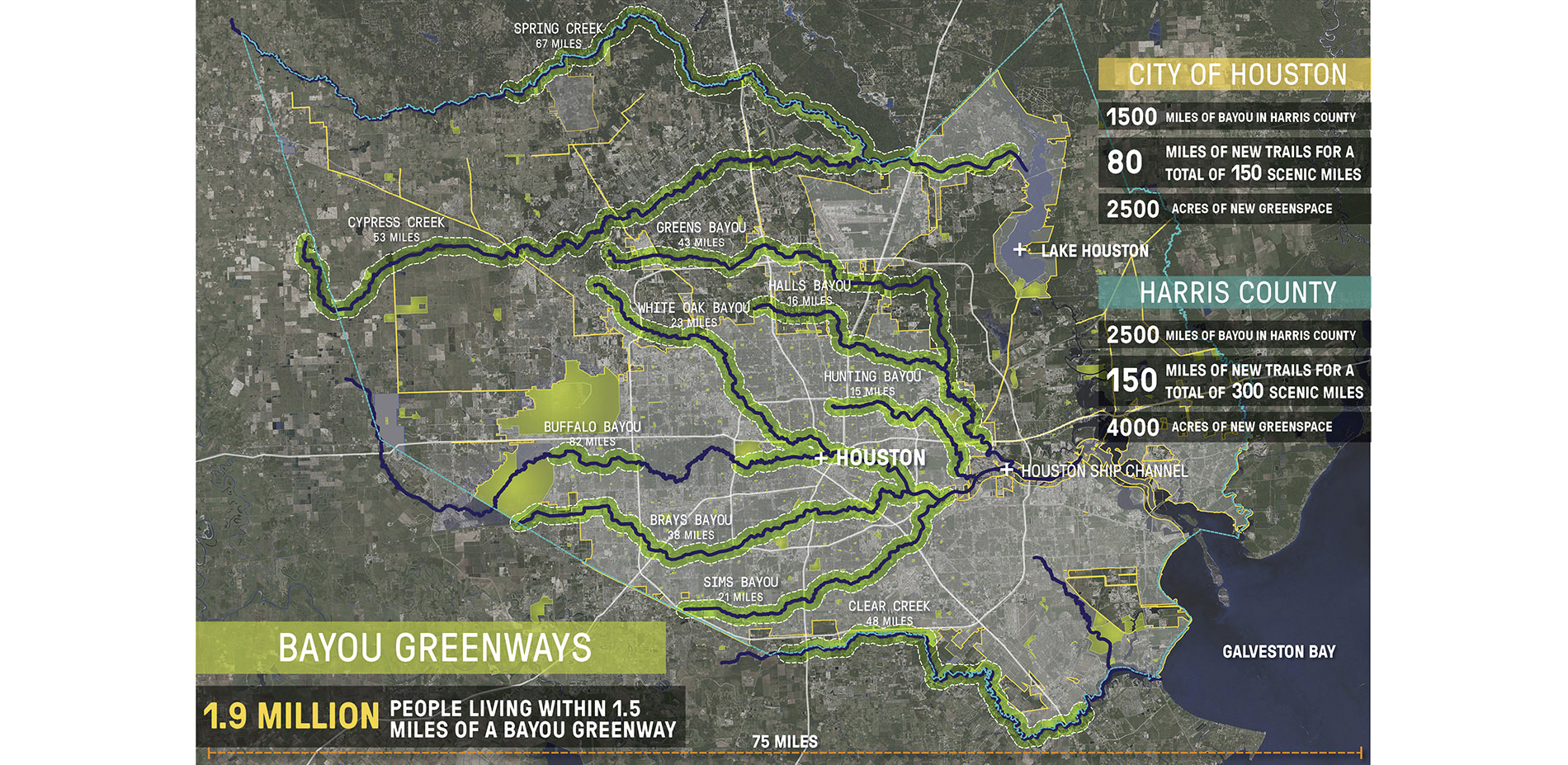
BAYOU GREENWAYS: RECONNECTING HOUSTON TO ITS NATURAL HERITAGE BY CREATING A NEW 300 MILE LINEAR PARK SYSTEM ALONG 10 MAJOR BAYOUS. ADDRESSING SOCIAL, CULTURAL AND ENVIRONMENTAL ISSUES IN THE CITY, THE PLAN CREATES EQUITABLY DISTRIBUTED PARK SPACE FOR ALL.
Photo Credit: Jonnu Singleton - SWA Group
Media: Please submit high-resolution image requests to images@asla.org.
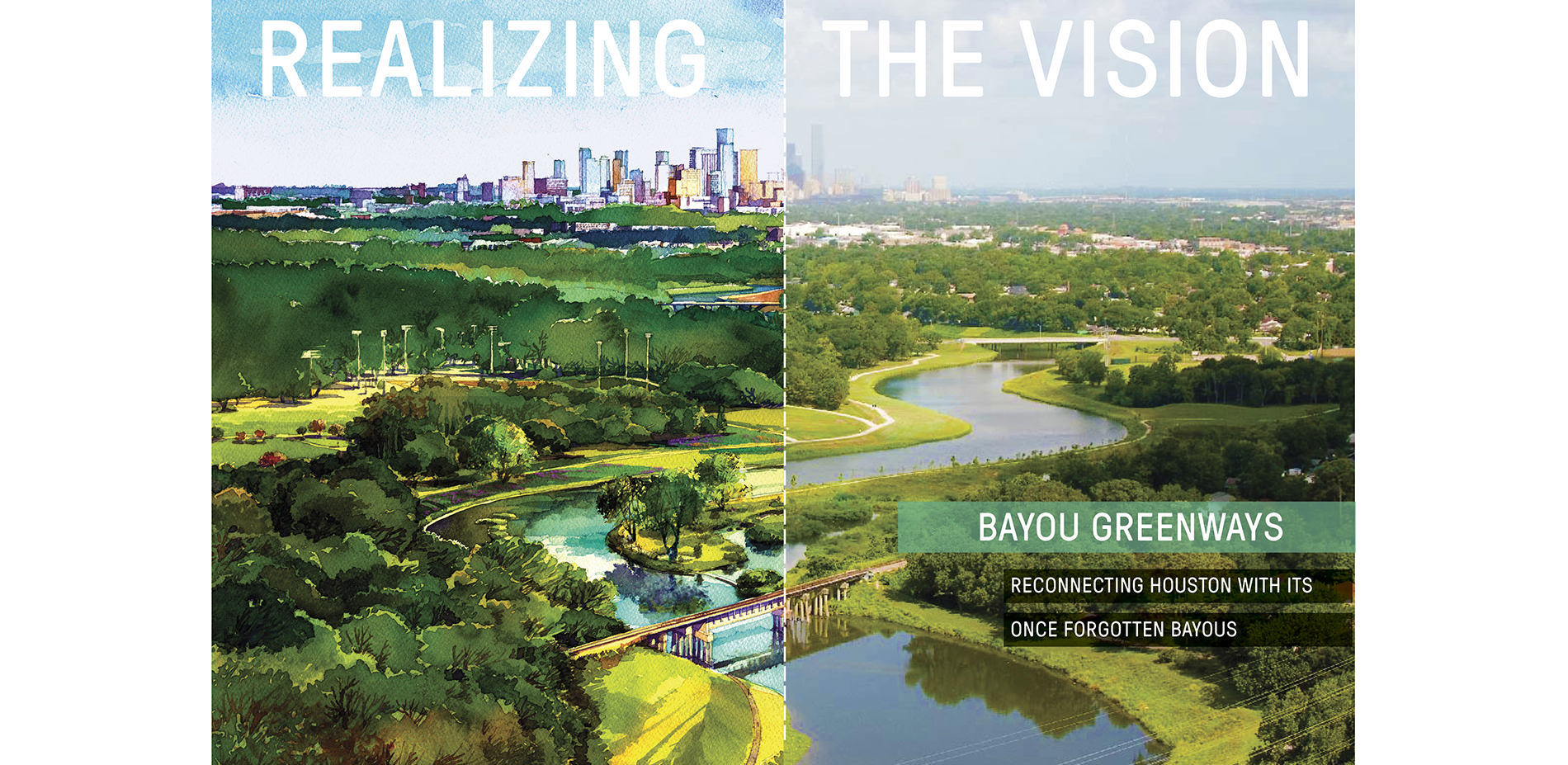
BASED ON ARTHUR COMEY’S 1913 REPORT, THE VISIONARY PLAN HAS BEEN OVER 100 YEARS IN THE MAKING. A CENTURY OF CITY GROWTH, NEGLECT, AND FRAGMENTATION HAVE CHANGED COMEY’S BASELINE. BAYOU GREENWAYS INTUITIVELY RECONNECTS THE BAYOU SYSTEMS AND HIS VISION RESULTING IN A LEGACY PROJECT FOR HOUSTON.
Photo Credit: Jonnu Singleton - SWA Group
Media: Please submit high-resolution image requests to images@asla.org.
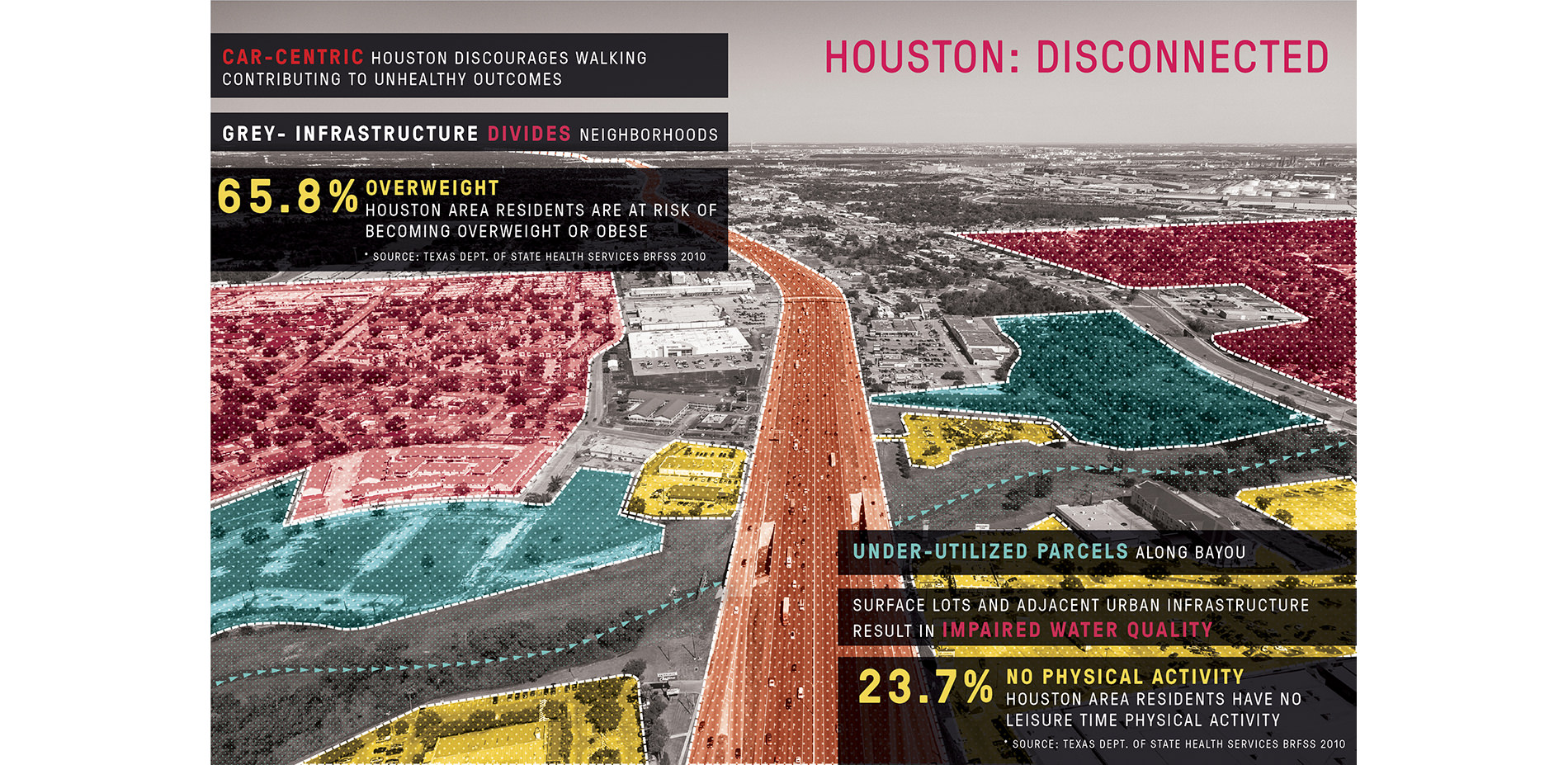
EXISTING CHALLENGES: HOUSTON’S HISTORIC “PATTERNS” OF DEVELOPMENT OFTEN CREATE A DISJOINTED, INCOHERENT AND UNHEALTHY URBAN FABRIC. A RELIANCE ON CARS AND CONCRETE HAS HARDENED THE CITY, MARRED ECOLOGICAL SYSTEMS, AND CUT PEOPLE OFF FROM NATURE AND ITS BENEFITS.
Photo Credit: Jonnu Singleton - SWA Group
Media: Please submit high-resolution image requests to images@asla.org.
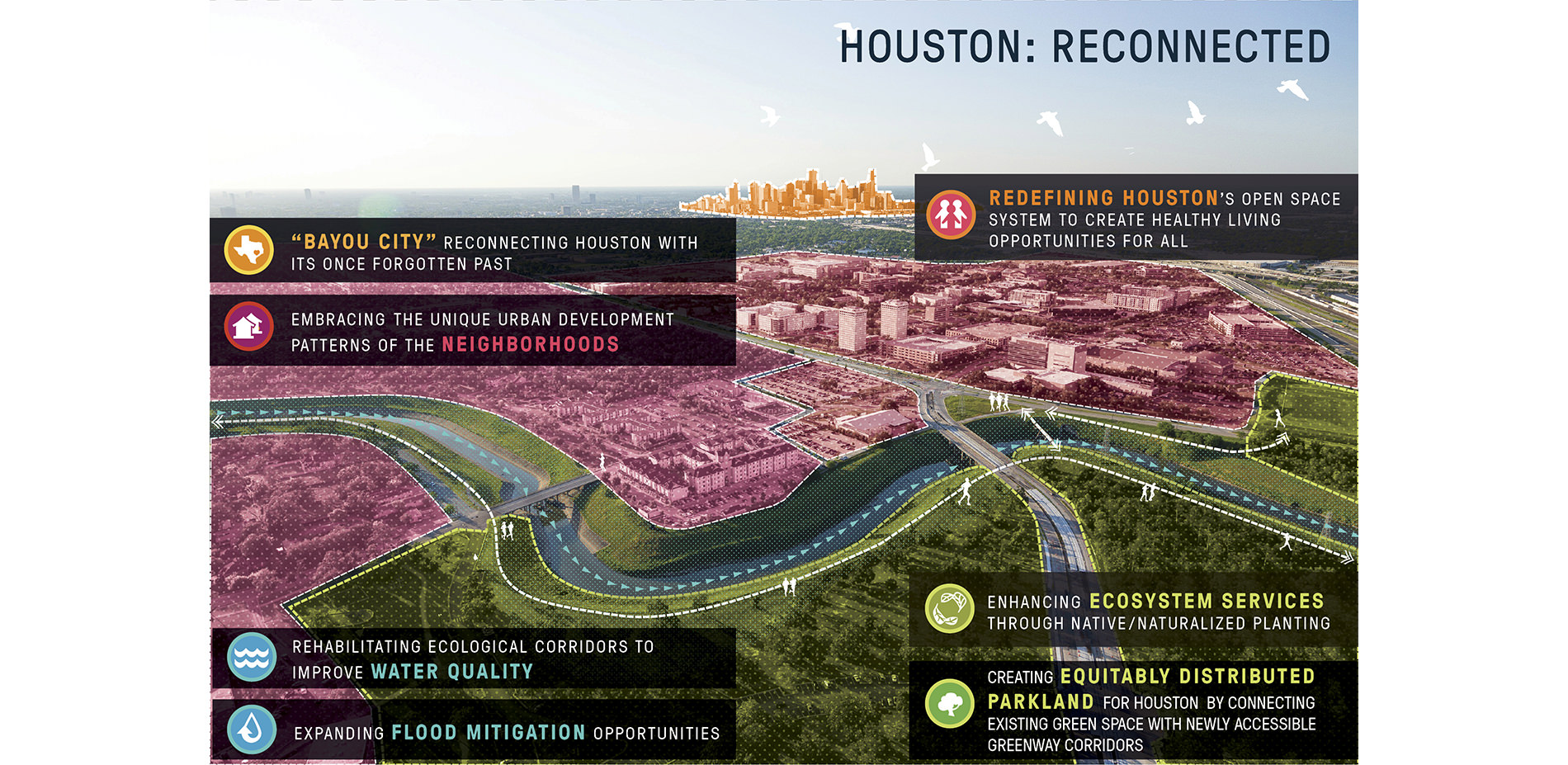
BAYOU GREENWAYS RECONNECTS HOUSTON BY EMBRACING HOUSTON’S DIVERSITY, TYING TOGETHER NEIGHBORHOODS AND PEOPLE AT A MULTIPLE SCALES, AND CREATING ACCESSIBLE OPEN SPACE THAT IS ECOLOGICALLY HEALTHY AND CONTRIBUTES TO QUALITY OF LIFE.
Photo Credit: Jonnu Singleton - SWA Group
Media: Please submit high-resolution image requests to images@asla.org.
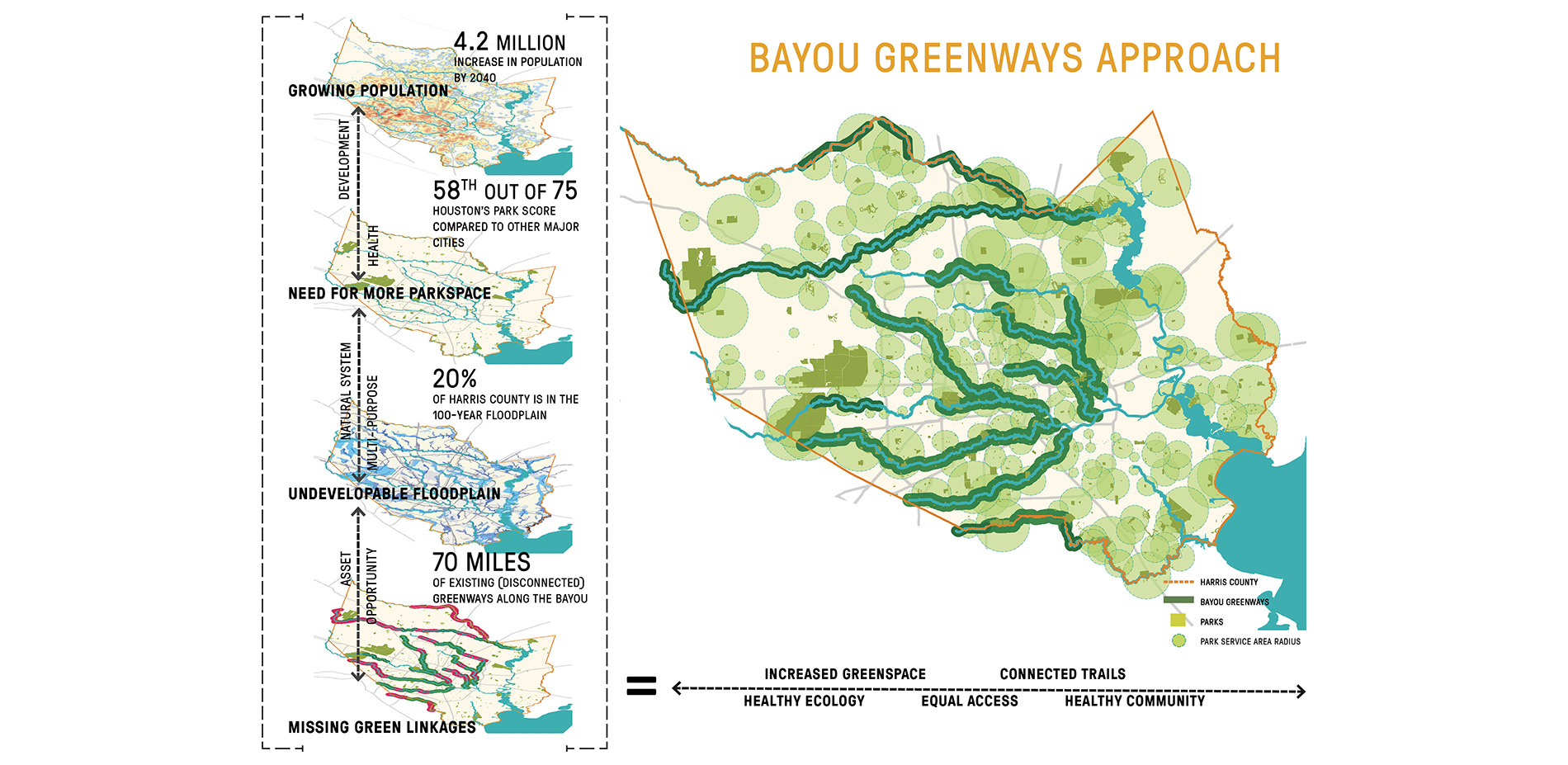
HOUSTON’S NEED FOR ACCESSIBLE OPEN SPACE IS EVIDENT WHEN CONSIDERING PARK RATINGS AND PROJECTED POPULATION GROWTH. EXISTING FLOODPLAINS, TRANSITIONING URBAN SPACES, AND NEW DEVELOPMENT ZONES PROVIDE IDEAL OPPORTUNITIES FOR INCREASED PARK AREA AND CONNECTIVITY.
Photo Credit: Jonnu Singleton - SWA Group
Media: Please submit high-resolution image requests to images@asla.org.
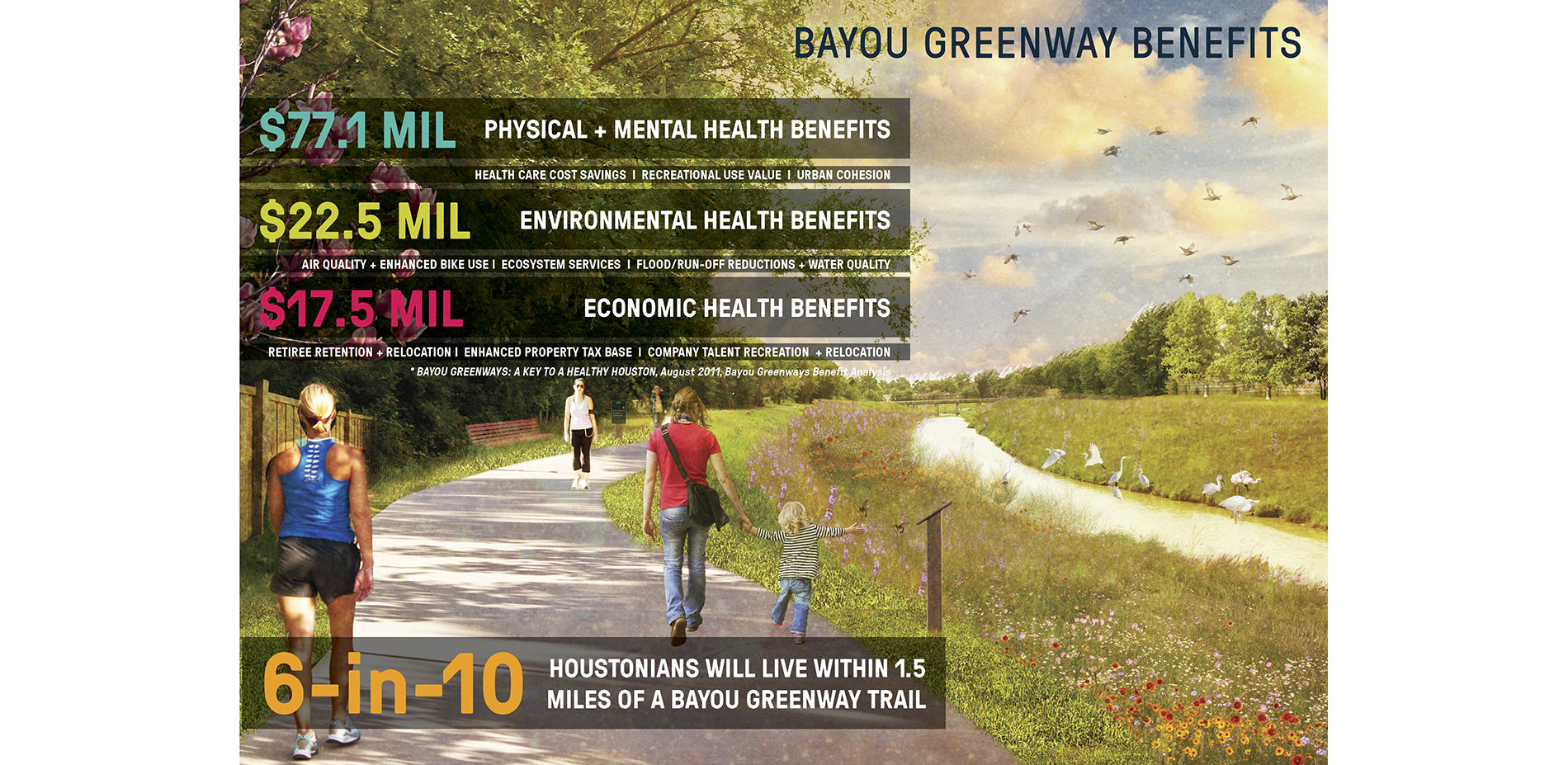
60% OF HOUSTONIANS WILL BE WITHIN REASONABLE WALKING DISTANCE OF A BAYOU GREENWAY. A STUDY BY PROFESSOR JOHN CROMPTON OF TEXAS A&M EQUATED THE PROJECTED ANNUAL ECONOMIC, ENVIRONMENTAL, AND PHYSICAL AND MENTAL HEALTH BENEFITS OF THE PROJECT TO BE EQUIVALENT TO $117 MILLION.
Photo Credit: Jonnu Singleton - SWA Group
Media: Please submit high-resolution image requests to images@asla.org.
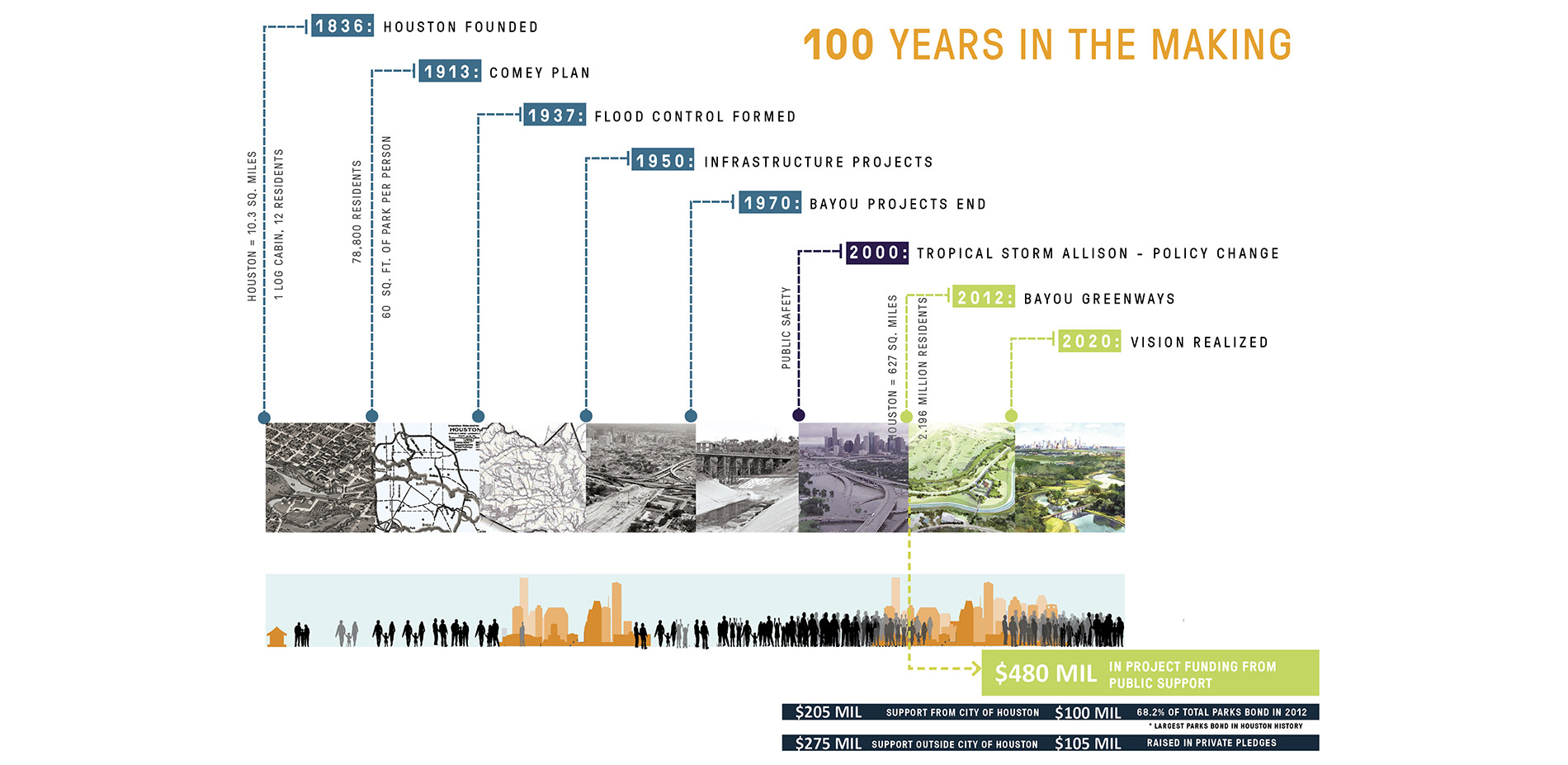
HOUSTON’S EVOLVING SENSE OF SELF IS ROOTED IN THE NEED TO RECONCILE CITY AND NATURE. CYCLES OF DEVELOPMENT ARE FRAUGHT WITH IMPACTS TO ITS GREATEST NATURAL AMENITY. BAYOU GREENWAYS PUTS NATURE AT THE FOREFRONT OF IDENTITY AND WORKS TO ENHANCE EXISTING DEVELOPMENT FRAMEWORKS.
Photo Credit: Jonnu Singleton - SWA Group
Media: Please submit high-resolution image requests to images@asla.org.
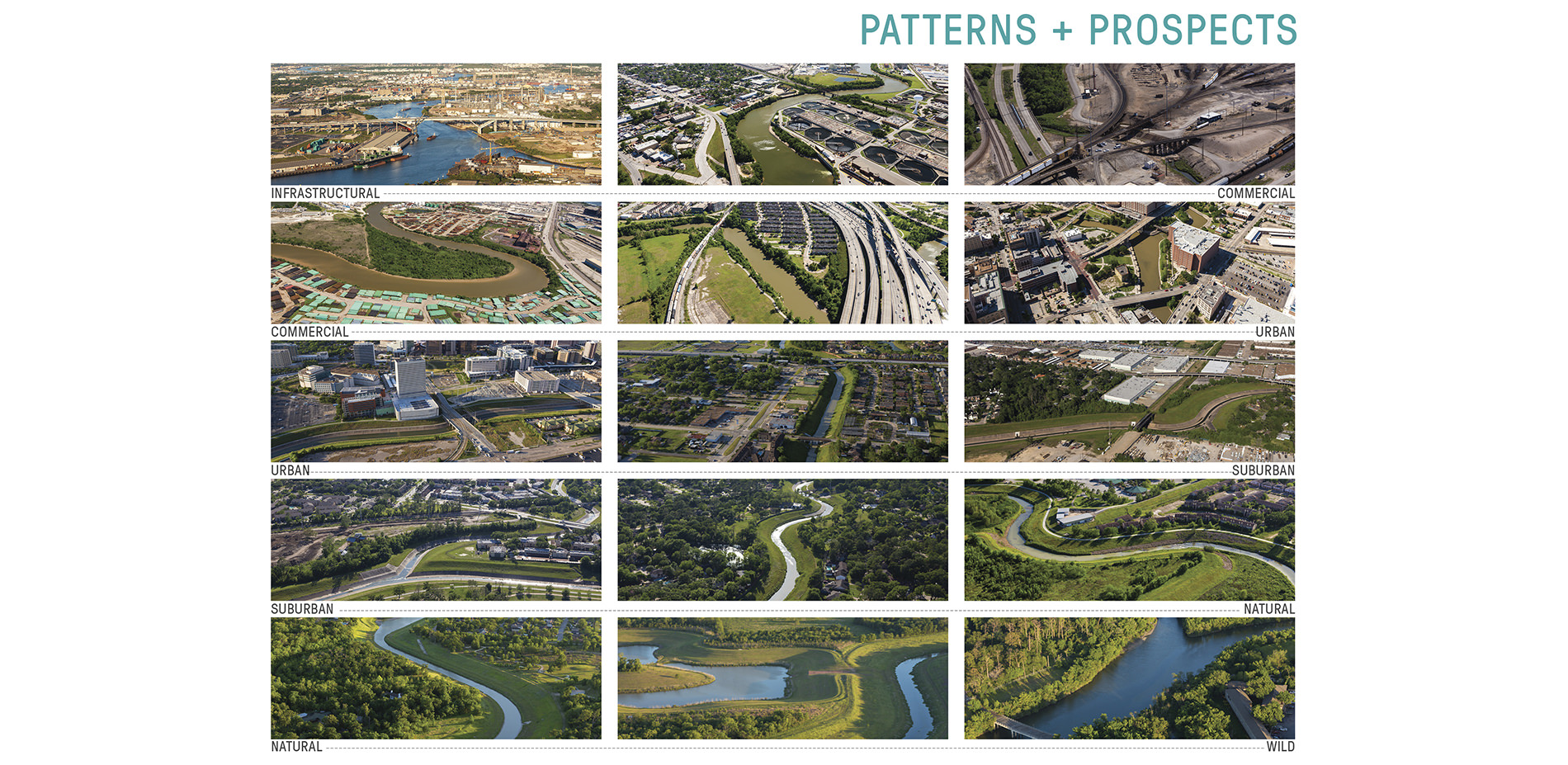
HOUSTON’S WATERWAYS STITCH TOGETHER A POETIC COMPOSITION OF PLACE, SPANNING A SPECTRUM OF WILD AND UNTAMED TO CONSTRUCTED AND CIVILIZED.
Photo Credit: Jonnu Singleton - SWA Group
Media: Please submit high-resolution image requests to images@asla.org.
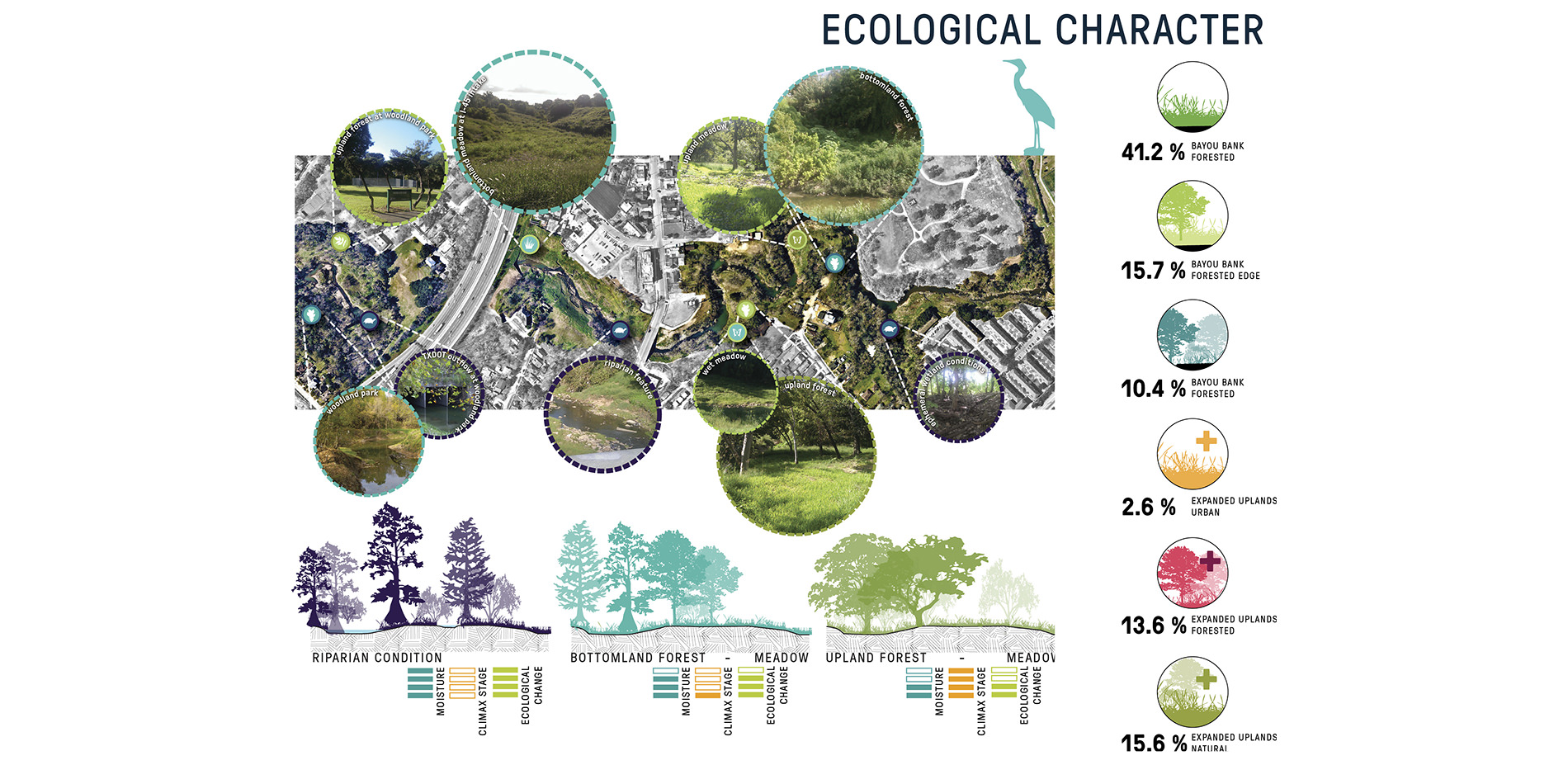
THE BAYOUS ARE A MATRIX OF MULTIPLE ECOSYSTEMS WEAVING TOGETHER. ALONG 1 MILE OF TRAIL THERE COULD BE AS MANY AS 7 ECOLOGICAL CONDITIONS WITH DISTINCT CHARACTERISTICS. THE SPECTRUM RANGES FROM DENSE FOREST TO OPEN MEADOW.
Photo Credit: Jonnu Singleton - SWA Group
Media: Please submit high-resolution image requests to images@asla.org.
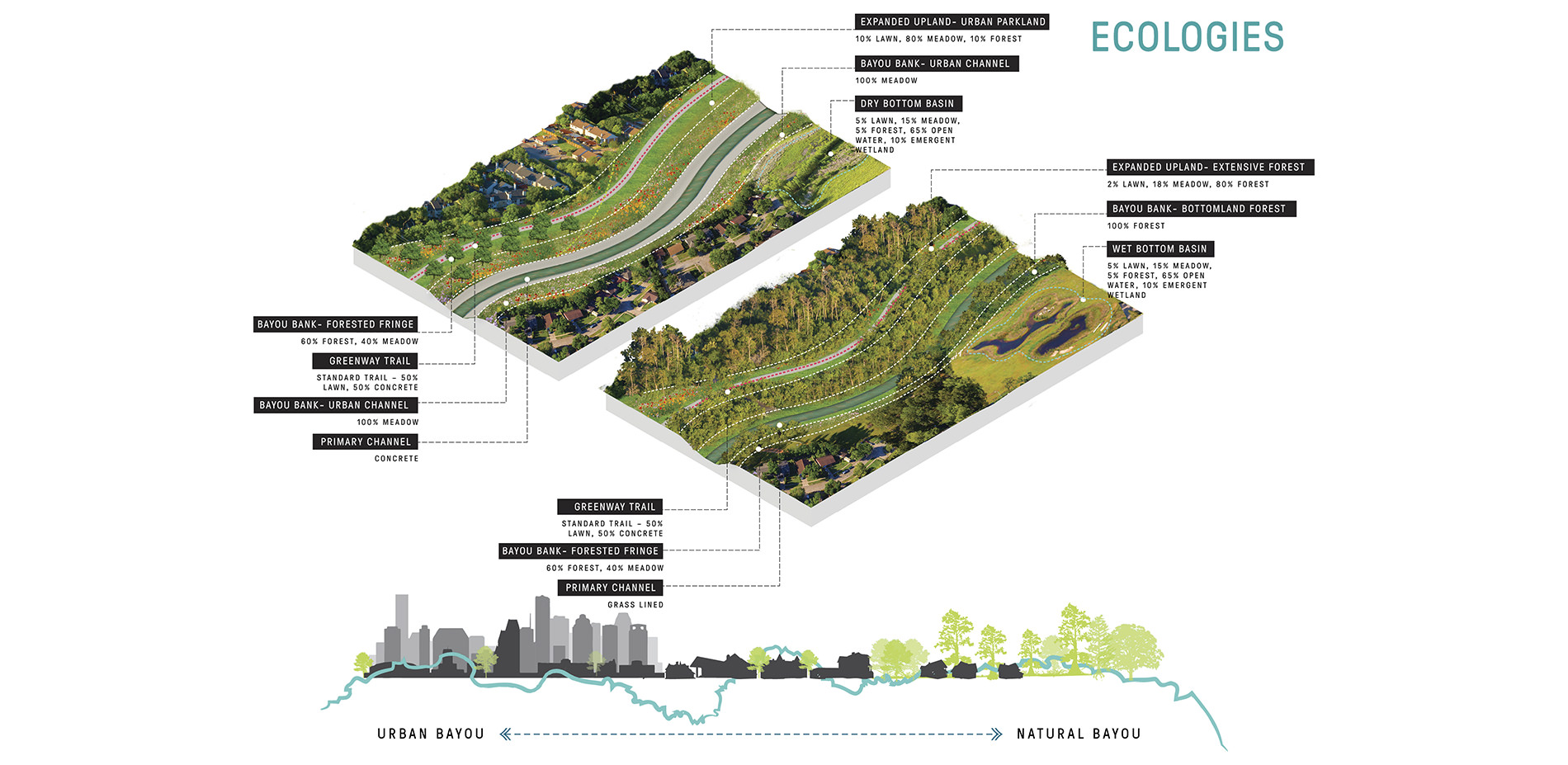
RESULTING LINEAR PARK CORRIDORS ARE A SERIES OF TAILORED INTERVENTIONS RESPONDING TO THE URBAN AND ECOLOGICAL CONTEXT OF EACH INDIVIDUAL BAYOU. THE MASTER PLAN IDENTIFIES ESSENTIAL BAYOU COMPONENTS AND ESTABLISHES GUIDELINES FOR THEIR APPLICATION TO INDIVIDUAL PROJECT SEGMENTS.
Photo Credit: Jonnu Singleton - SWA Group
Media: Please submit high-resolution image requests to images@asla.org.
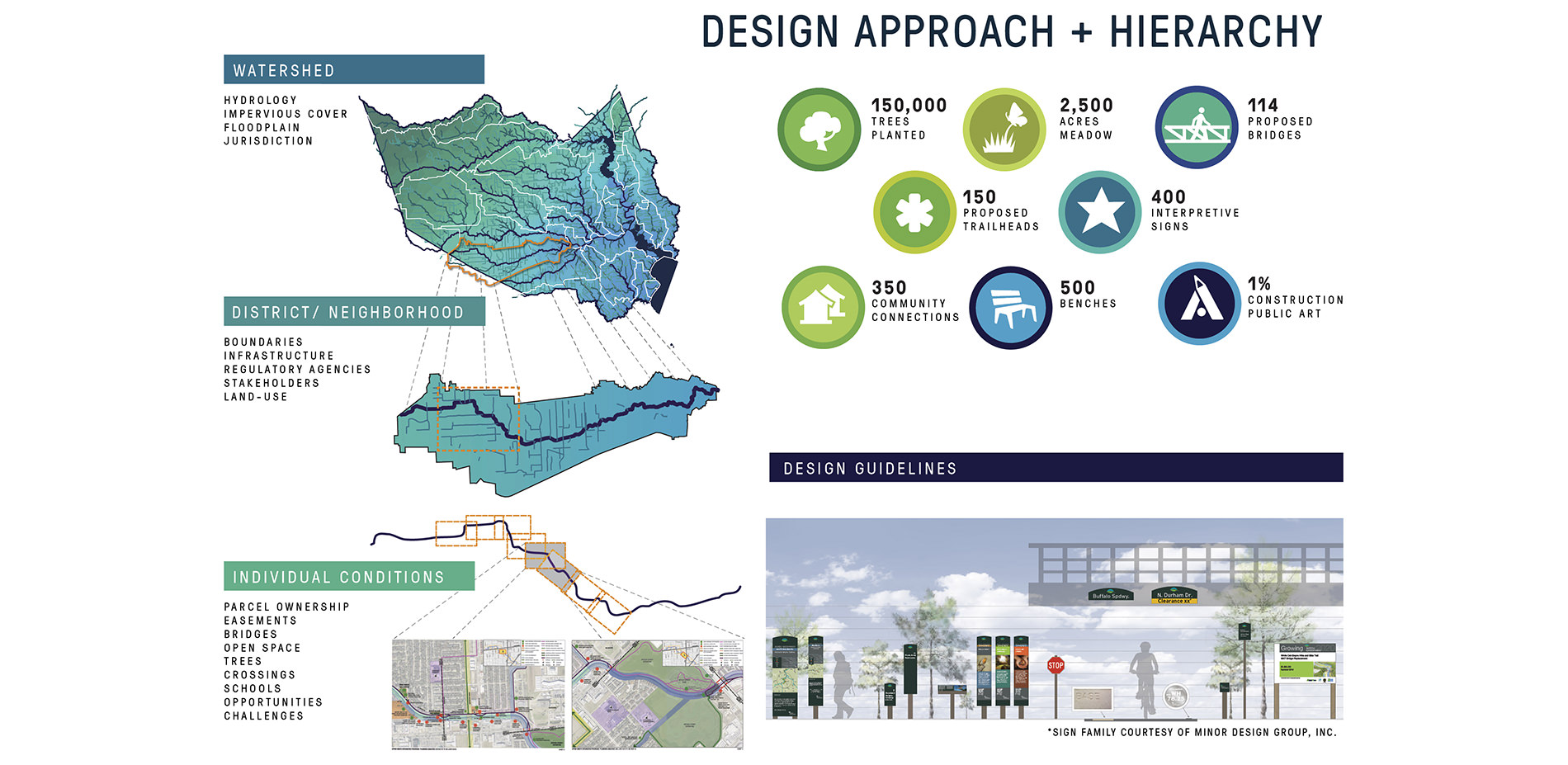
PLANNING AND ANALYSIS IS BASED ON A HIERARCHY THATS BEGINS AT A COUNTY LEVEL, CONSIDERS WATERSHED PLANNING, AND RESPONDS TO BAYOU SPECIFIC SEGMENTS. DESIGN GUIDELINES ARE DEVELOPED AT EACH LEVEL TO CREATE A PROJECT THAT CAN BE SYSTEMATIC WITHOUT LOSING INHERENT UNIQUENESS.
Photo Credit: Jonnu Singleton - SWA Group
Media: Please submit high-resolution image requests to images@asla.org.
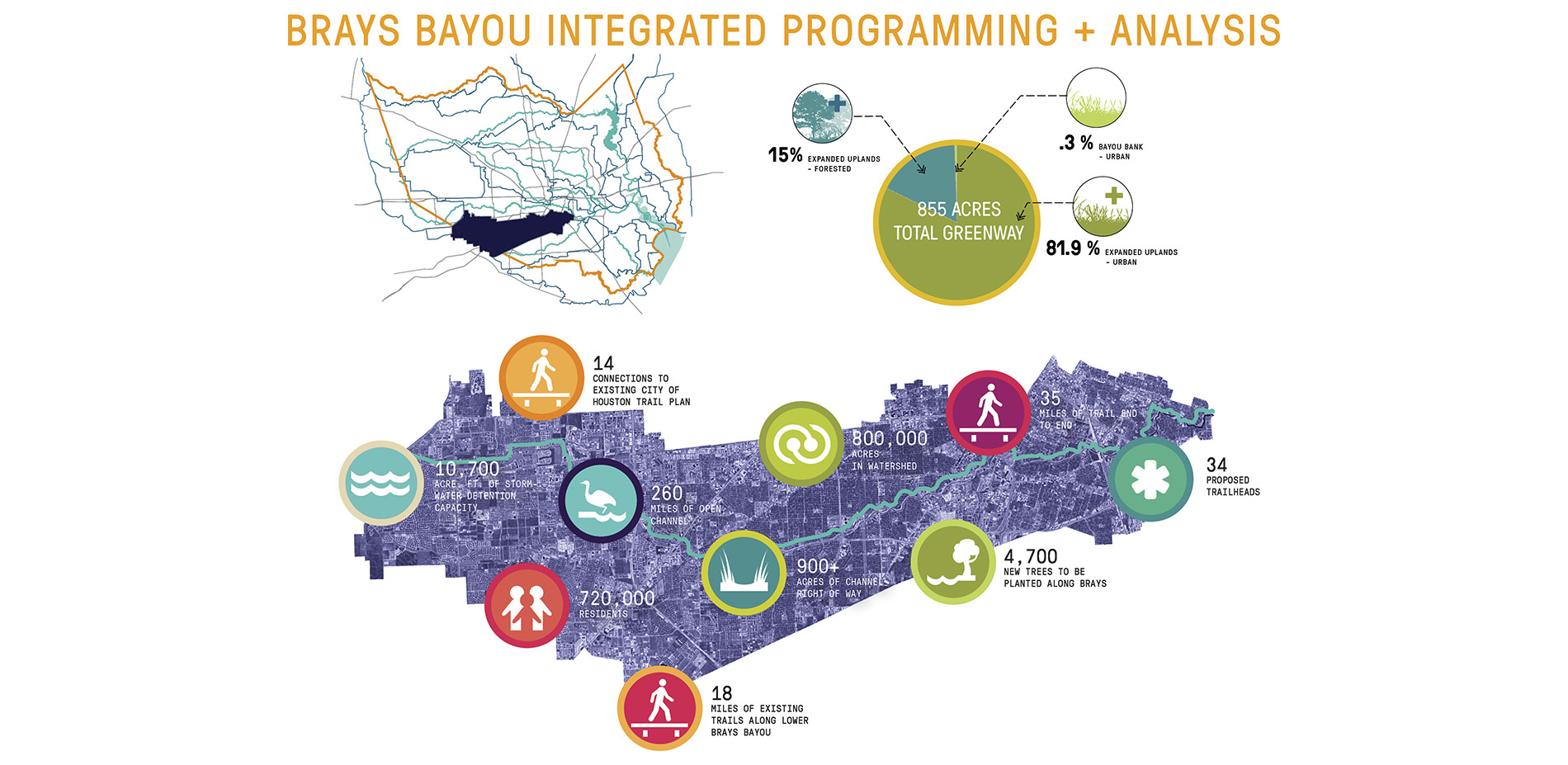
EACH WATERSHED AND BAYOU ARE UNIQUE IN ECOLOGY, DEMOGRAPHICS, DEVELOPMENT PATTERN, CHANNEL TYPE, AND OPEN SPACE CHARACTER. PARK COMPONENTS RESPOND ACCORDINGLY TO VARYING SENSE OF PLACE.
Photo Credit: Jonnu Singleton - SWA Group
Media: Please submit high-resolution image requests to images@asla.org.
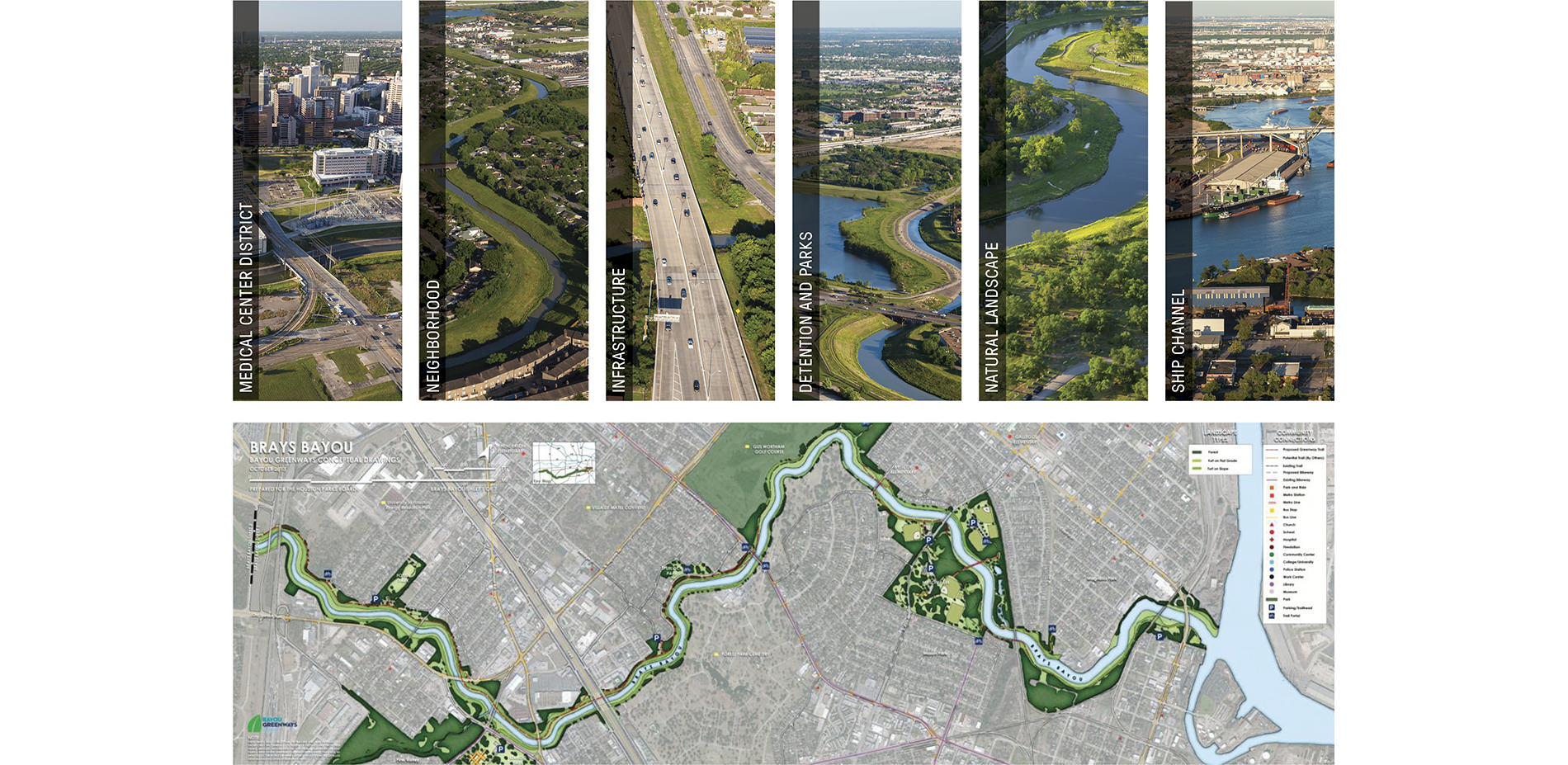
EACH BAYOU GENERALLY RUNS WEST TO EAST BEFORE REACHING THE HOUSTON SHIP CHANNEL AND GALVESTON BAY. FUTURE BAYOU GREENWAY USERS WILL EXPERIENCE HOUSTON’S INDUSTRIAL HERITAGE, CONNECT TO EXISTING AND NEW GREEN SPACES, TRANVERSE UNDER AND AROUND MAJOR INFRASTRUCTURE, CONNECT TO NEIGHBORHOODS, AND ENGAGE WITH CITY CENTERS AND DISTRICTS
Photo Credit: Jonnu Singleton - SWA Group
Media: Please submit high-resolution image requests to images@asla.org.
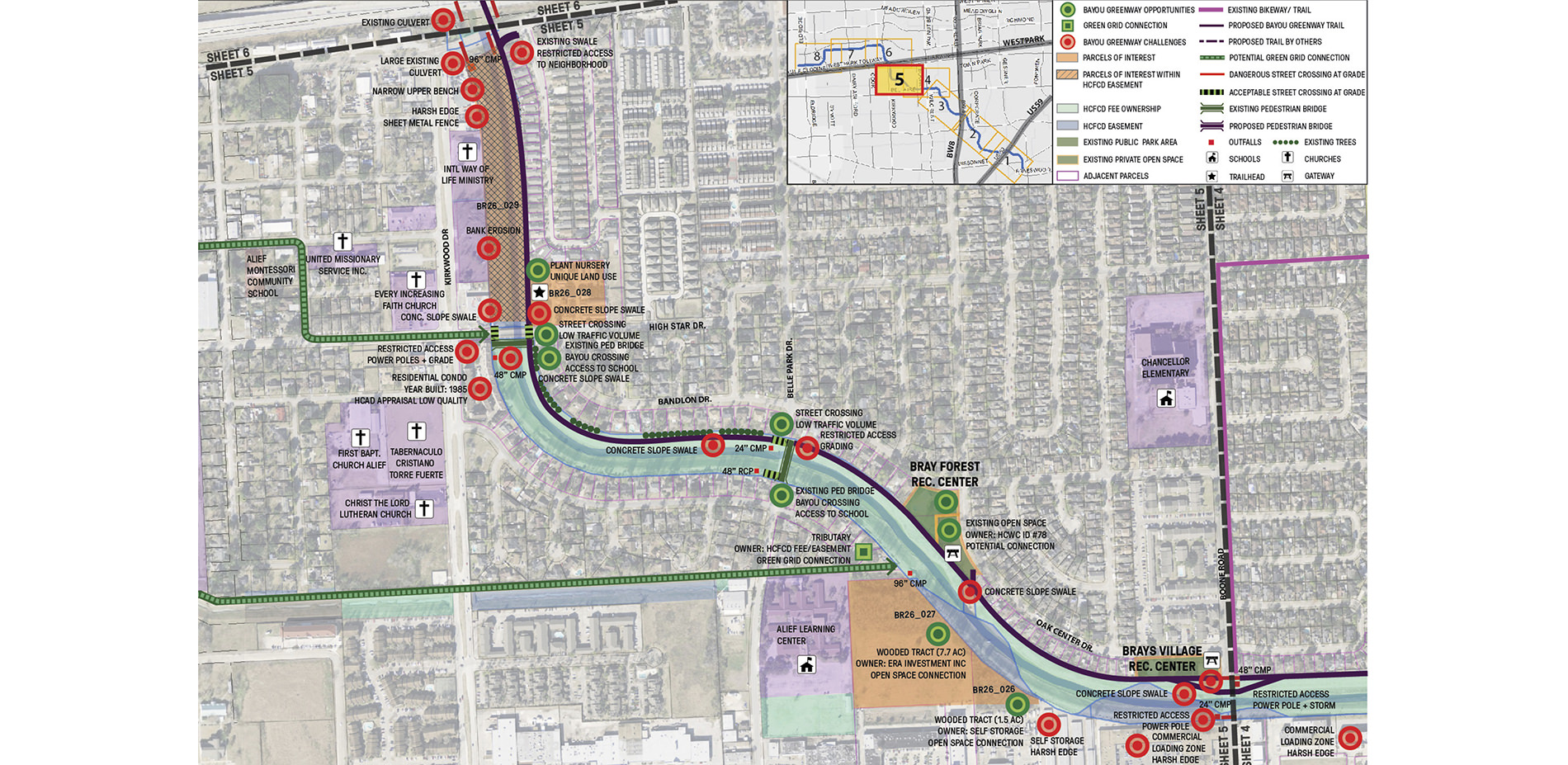
THE INTEGRATED PROGRAMMING AND ANALYSIS PHASE DIRECTS LOCAL DESIGNERS TO ENGAGE EACH SEGMENT BY GROUND TRUTHING AND VERIFYING OPPORTUNITIES AND CONSTRAINTS. SERVING AS THE FINAL STEP BEFORE CONSTRUCTION DOCUMENTATION, THIS PROCESS SOLIDIFIES DESIGN DECISIONS.
Photo Credit: Jonnu Singleton - SWA Group
Media: Please submit high-resolution image requests to images@asla.org.
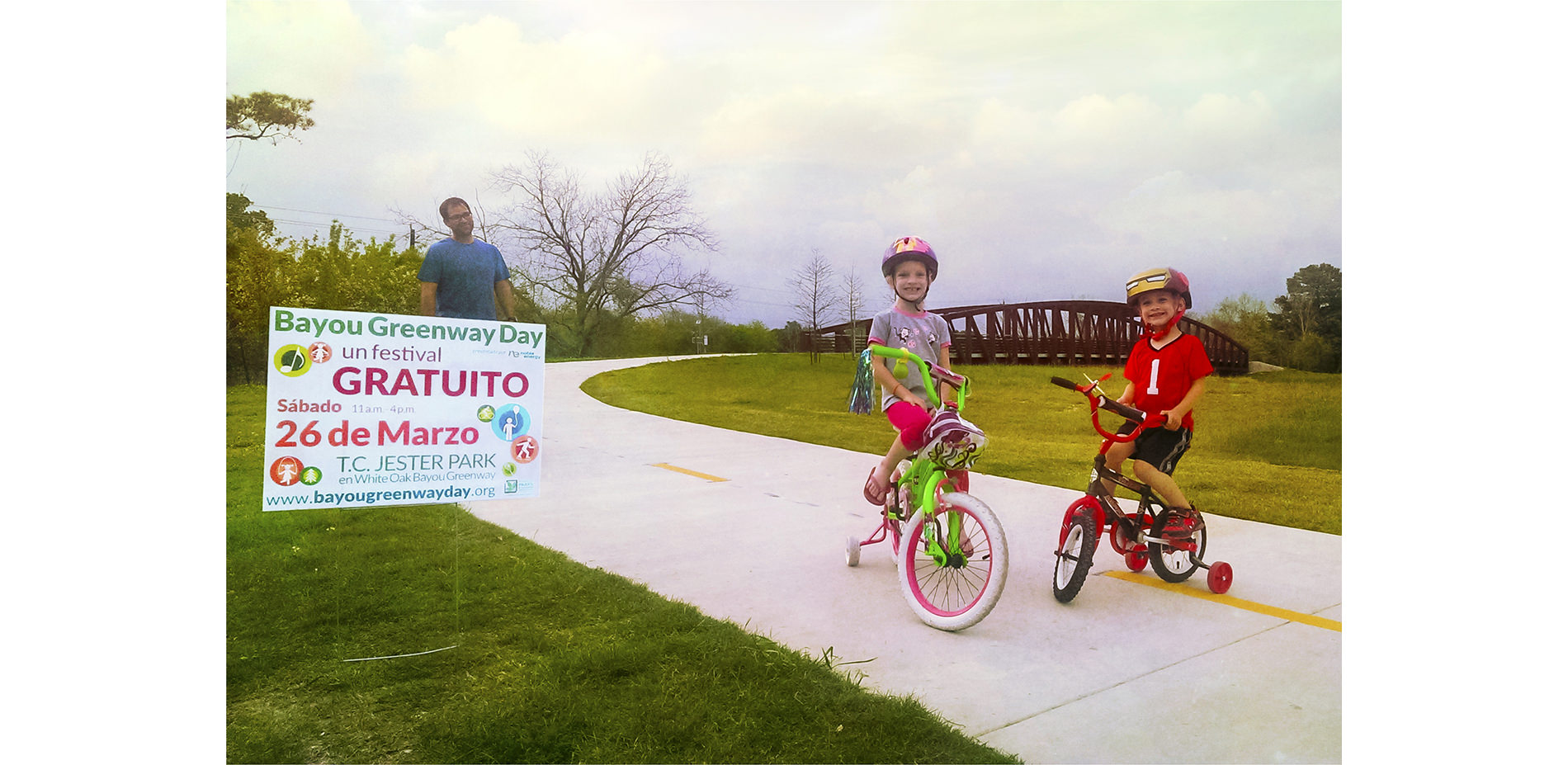
WHITE OAK BAYOU - ANTOINE TO ALABONSON TRAIL: SEGMENTS OF THE GREENWAYS ARE BEING DOCUMENTED, UNDER CONSTRUCTION, OR COMPLETED AND BEING EMBRACED BY THE COMMUNITY.
Photo Credit: Jonnu Singleton - SWA Group
Media: Please submit high-resolution image requests to images@asla.org.


















